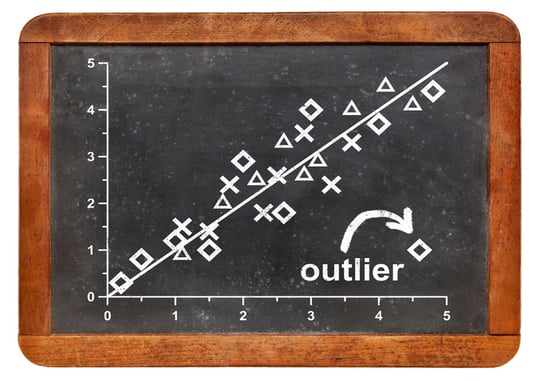Sales efficiency is the objective.
When you have maximized sales with minimal friction and cost, you will have achieved sales efficiency. 
Sales efficiency is diminished when:
- Sales Talent - Poor sales hiring decisions are allowed to continue unchecked.
- Sales Systems - Sales systems are not habitually followed.
- Sales Culture -Behaviors contrary to an accountable, performance-driven sales culture are allowed unchecked.
There is always, always room for improvement.
Strategic CEOs and Sales VPs realize that true sales efficiency is something that is truly never completely achieved yet always pursued.
The direct relationship between sales personality and performance.
Every sales role has a requisite combination of Behaviors, Driving Forces (Motivators), Acumen and Competencies necessary to do the job well.
Through data analysis, you should be seeking to better understand specific elements of a salesperson's "personality" that contribute to or reduces sales performance.
Informed decisions via simple data analysis foster sales efficiency.
Simple data analysis can facilitate the understanding of inefficiencies or "growth opportunities" in your sales team through the identification of:
- Sales personality traits that seem to add value in your sales model.
- Sales personality traits that seem to reduce value in your sales model.
- The often hidden relationships between sales performance and personality that may signal an opportunity for optimization.
The creation of simple XY plots help visualize relationships that otherwise may have gone unnoticed.
An XY plot compares two variables to identify relationships or correlation.
These relationships should be studied and replicated where possible.
You do not need fancy statistical software. A simple Excel spreadsheet is a powerful way to begin analyzing sales personality traits and sales performance.
If you have completed this type of data analysis, you are likely familiar with what an "outlier" is.
On outliers.
From a data perspective, outliers seemingly do not fit in. See the following picture illustration for an XY plot example.

Outliers are situations (people or things) that vary relative to other members of a particular group in a data set.
An example would be a salesperson who lacks the required sales personality commonly attributes to sales performance yet performs well.
We call these outlier salespeople "adapted high-performers".
Chances are you have many "adapted high-performers".
You would be wise to study these salespeople because these "outlier salespeople" or adapted high-performers often hold the key to level-jumping sales performance.
If you have yet to complete this basic data analysis, it is worthy of doing so. Simple data analysis has the potential to be a true game changer by identifying optimization opportunities.
Why some low job fit salespeople become adapted high performers.
As mentioned previously, your objective is to hire the best salespeople, maximize their sales performance and avoid low performers. Low performers miss sales and use up valuable sales management time with little or no return on effort.
Following are five of the most commons reasons why a low job fit salesperson may perform well despite their low job fit:
- The sales territory may be so lucrative that it carries low job fit salespeople thereby making them seemingly appear quite successful when they actually are not.
- The salesperson may have a hidden motivator (or two or more) that drives sales performance.
- The salesperson may have developed a compensating best practice that artificially drives sales performance.
- The salesperson may have particularly strong belief in the mission, vision and guiding values of the organization.
- Some combination of the above.
The larger the sales team, the greater the potential for the existence of adapted high-performers.
An example - Bob, the outlier.
Bob sells in a one-time B2C one-call close sales environment.
Bob is an outlier.
From a sales personality perspective, Bob should not be a top sales performer.
Bob consistently outperforms 90 percent of the sales team despite lacking essential sales personality traits that are typically associated with top sales performance.
Interestingly, while Bob's territory is not particularly desirable he outperforms his colleagues who sell in far more lucrative markets.
Bob is unique in two important ways:
- He keeps very little of his high sales income for himself. Instead, he commits much of his commission to supporting a particular social cause he is passionate about.
- He makes very few cold calls.
Yet, Bob is an adapted high-performer.
Bob lacks the sales personality often associated with top sales performance.
With the exception of Bob, the most successful high job fit salespeople in this particular sales role follow a rigid system of cold calling to set up appointments with influencers.
Yet Bob is successful.
How did I know Bob was someone to study? The data told me. Bob is an adapted high performer. After analyzing the data, I engaged Bob to find out how he did it. When I heard he avoided cold calls yet was successful in a marginal territory, I knew I had to find out his secret to top sales performance.
Bob's secret to sales success.
Instead of pounding the phone, Bob pounds the speaking circuit.
Bob often speaks at trade shows and association meetings. His speaking helps him achieve similar sales funnel-filling outcomes as his higher-job fit colleagues who rely on heavy cold calling.
Lesson One = Study adapted high performers to identify powerful best practices the rest of your sales team should adopt.
After learning of Bob's secret to success, we encouraged all sales team members to mirror Bob's strategy of speaking at trade shows and association meetings in tandem with existing cold calling.
Sales outliers can help identify best practices that are destined to become common practice.
When the best practices of adapted high-performers become common practice, the sales performance "tide" is often lifted for the entire sales team.
As adoption of best practices occurs, the performance of the rest of the sales team increases accordingly.
Lesson Two = Don't look for more salespeople like Bob.
Naturally, when a high-performing outlier is identified, someone gets the bright idea of trying to find more salespeople like Bob.
Don't.
The results are often very poor. Stick to your sales hiring scorecard. Only hire salespeople with the requisite background, education, experience and sales personality. Make no exceptions.
Get curious.
The best strategy for you is to become curious.
Look at every piece of data you can including your sales talent (sales personality) as well as your sales outcomes (key performance indicators).
Use a sales personality test with validity backed by brain research to objectively quantify your sales talent.
Then compare each salesperson's talent data to their sales key performance indicators (KPIs).
Look for trends and outliers.
Then zero in on your outliers to identify best practices and share them with the rest of your sales team.
Call on us to share observations or questions.




